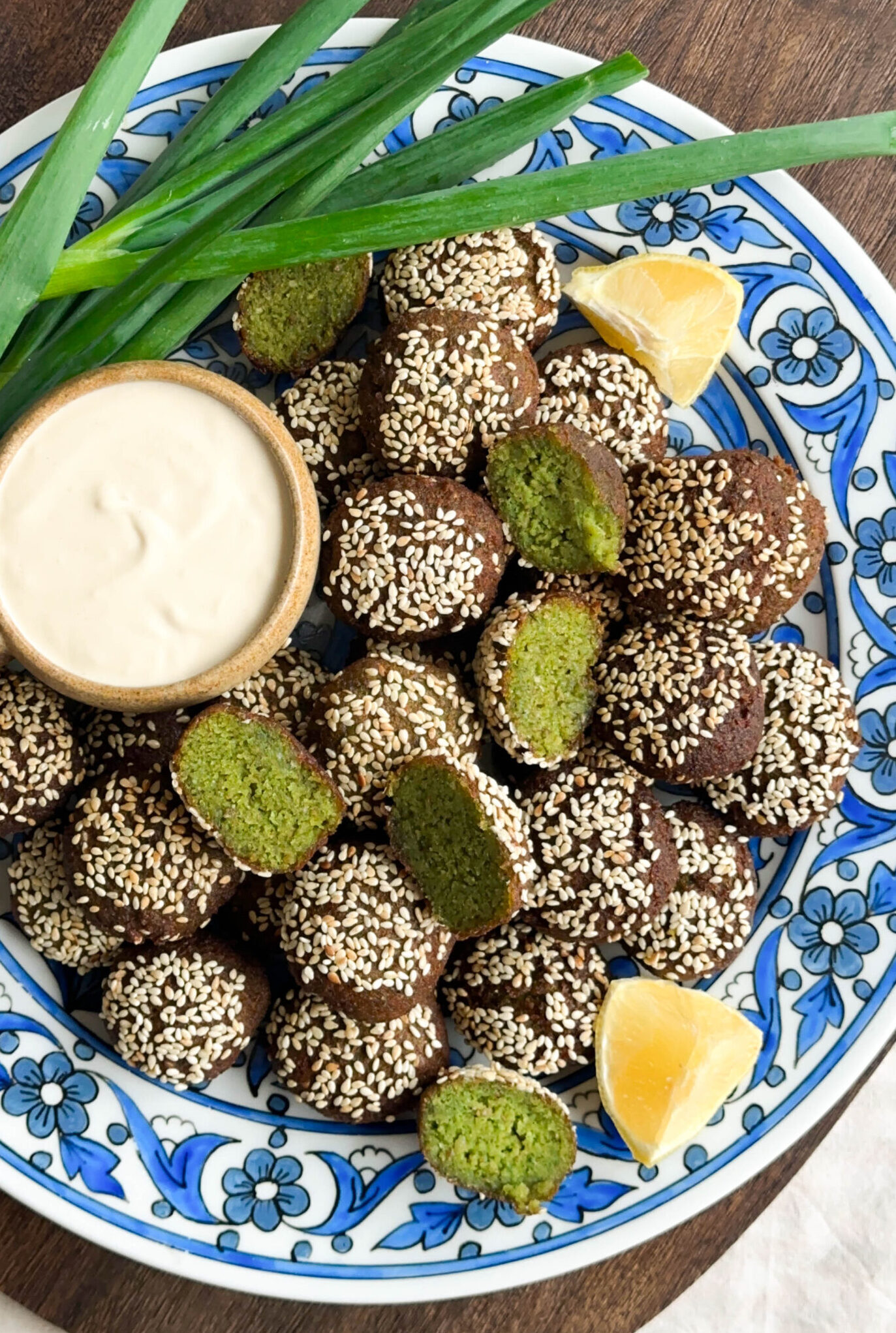Tameya: Authentic Egyptian Falafel

Tameya: The Authentic Egyptian Falafel Recipe
- 450 g fava beans
- 1 Small yellow onion
- 80 g Green Onion
- 6 cloves Garlic
- 30 g Fresh parsley
- 30 g Fresh coriander
- 20 g Fresh dill
- 2 tsp Ground coriander
- 2 tsp Ground cumin
- 1 tsp Baking powder
- 3 tsp Salt
- 1 tsp Cayenne pepper
- 2 tbsp Flour (or chickpea flour for a gluten-free option if the mixture is too wet)
- 1 litre Vegetable oil for frying
- 1/4 cup Sesame for coating
- 1
Soak the fava beans overnight. The following day drain the water, rinse the beans and drain all liquid using a sieve to remove as much of the moisture as possible.
- 2
Put the softened fava beans, parsley, cilantro, dill, yellow and green onion, garlic, flour and spices into a food processor and blend until the mixture forms a dough. The consistency should allow you to create small oval patties.
- 3
Transfer the mixture to a bowl and mix in the flour.
- 4
Mix the baking powder with one tablespoon of hot warm to hot water and fold this into the mixture immediately.
- 5
Form the falafel mixture into small round balls and lightly press sesame seeds on both sides. This should slightly flatten the falafel's.
- 6
Cook the patties in a pot of preheated oil (around 350°F) until golden brown on each side.
- 7
Serve with warm wraps or Lebanese bread, garlic or tahini sauce, fresh salad, gherkins or pickled vegetables.
- 2